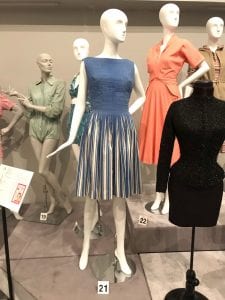Today we are focusing on the color orange, it’s origins, and how it made it’s way into the world of fashion. Orange is not always the most common color on the street, as it is vibrant, bright, and brings attention to those wearing it. Common in the fall season, the changing leaves, pumpkins, and modern advertising has ingrained this color into our heads as a cornerstone for the months of October and November. This is how we think of orange in the United States, but in different areas of the world, along with varying religions, orange takes on many meanings.
Use of the unofficially named color began in ancient times when Egyptians would use a yellow-orange mineral called realgar to paint on tomb walls. Highly toxic due to arsenic levels, realgar was also used by the Chinese to repel snakes. Perhaps this is one reasons we view the color orange with such an immediate reaction. It’s backgrounds stem from one of toxic natural minerals and danger, which is suitable for Halloween. Orpiment, another yellow-orange toxic mineral, was used in Ancient Rome as a way of valuable trade. In addition, it was used in Medieval times as a way to allow certain manuscript to be illuminated. Before it was even given a name, the color orange was given an image of value, danger, and vibrancy.
Known as yellow-red and saffron up until the 16th century, the importation of orange fruit trees Asia to Europe pathed the way for this new name. Common in Asian culture and religions, monks and holy men are often seen in this hue, while the color itself is known as a symbol of transformation in Confucianism. Saffron, from which the name stems, is considered the most expensive dye in both China and India. Once again, we are seeing this color given an image of high value, with significant meaning. It is also prevalent in the Buddhist religion. A representation of high illumination and perfection, the color can be used to signify a quest for knowledge, as well as a sign of fertility and abundance when worn by Pomona, the goddess of fruitful abundance.
Chrome orange was the start of synthetic orange pigments. One famous artist, Monet, often used this vibrant hue in nature to capture a sense of excitement and warmth. Today, we see variations in the color. A darker, warmer shade gives a sense of comfort and ease when associated with the fall season. A brighter, more vibrant shade would elicit strong emotions with eye catching capabilities. Popular examples in clothing would be safety vests, life jackets, U.S. prison jumpsuits, and other uniforms. We also see this trend in sports equipment, such as basketballs, ping pong balls, and certain brands of tennis balls. These examples call a need for attention and alertness.
The 1960s was known for its mod culture. Orange was a prevalent color in these times. From furniture and clothing, to automobiles and album covers, this hue reached out its hand. Among every shade, a tangerine orange was most prevalent in the earlier years of the decade, eventually turning into a darker orange for the bohemian style 70s.
Above right is a Courreges orange vinyl coat from c.1965. Andre Courreges was a French dress designer. He was Balenciaga’s first assistant and eventually made his reputation through Parisian Fashion in the 1960s. He was mainly known for his futuristic and youth-oriented style. The jumpsuit with large orange polka dots was designed by Rudi Gernreich, a noted knitwear designer famed for unisex designs. Next is a silk print mini dress by Emilio Pucci, an Italian designer noted for his abstract prints in the late 1960s.
RESOURCES:
The History of the Color Orange: From Tomb Paintings to Modern-Day Jumpsuits


















 Let’s start with women’s fashion. When walking on campus in the late 1800’s to
Let’s start with women’s fashion. When walking on campus in the late 1800’s to 






















